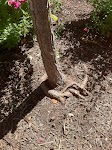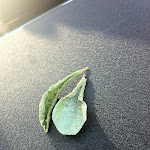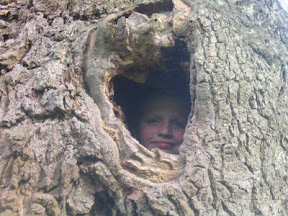By far, the most prevalent tree disease I encounter is Hypoxylon canker. It affects nearly every species of tree native in our area. The disease typically targets stressed trees during drought conditions, so you can imagine how central Texas is a great niche for this sapwood fungal disease. Continue reading Hypoxylon Canker
Category: Sick Tree
Summer Limb Drop
Every year, starting in late June I see limb failures that appear to be caused by a fungus developing a pressure pad directly in the inner fibers of the wood. The pressure from this growth causes the wood to shear and the limb fails.
ISA Tree Risk Assessment Qualification (TRAQ)
Assessing tree risk is one of the more complex functions certified arborists must perform. The simple fact is that tree failures are, in large part, unpredictable. To help our profession, the International Society of Arboriculture (ISA) has developed some standards to the process of evaluating tree risk and there is now a “qualification” for arborists to acquire. Being the inquisitive individual that I am, I’ve attended the class and passed the test to become TRAQ qualified. Continue reading ISA Tree Risk Assessment Qualification (TRAQ)
Tree Fungi Identification Tool – Photo Helper
There are so many different fungi out there. Only some of them affect trees. Some grow on/in trees, but don’t really affect the tree’s health. Some usually don’t affect tree health, but can become pathogenic in the right circumstances. Identifying and understanding all these different fungi is definitely one of the more challenging parts of being an arborist. Over the years, I have run into a number of these fungi and done some homework on them. However, many of these fungi are pretty uncommon so retaining all the details I learn about a fungus I only see once in a while becomes an issue sometimes. To help with the challenges of identifying fungi, I made this Fungus photo identification helper tool. I’ve only recently created it, so there are a lot of fungi that I haven’t yet added to the list. But, it will grow with time as I use it. I hope you find it helpful. Watch this short video to see how it works.
Girdling Roots
 Most planted trees in the Austin area are container grown trees. Most container grown trees develop girdling roots. If you’ve planted a tree, there is a good chance this is going to be an issue for your tree. Girdling roots are a serious problem. The end result is the tree literally choking itself. Tree death is the typical result from severely girdling roots. Even if your tree is lucky enough to survive, overall health and vigor will be poor. Behind construction and weed-n-feed damage, this is probably the third most prevalent and serious tree issue I run into out in the field (especially for transplanted trees). The picture to the left shows a typical looking girdling root. Keep in mind these aren’t always visible from surface level. Sometimes you have to dig down to find them.
Most planted trees in the Austin area are container grown trees. Most container grown trees develop girdling roots. If you’ve planted a tree, there is a good chance this is going to be an issue for your tree. Girdling roots are a serious problem. The end result is the tree literally choking itself. Tree death is the typical result from severely girdling roots. Even if your tree is lucky enough to survive, overall health and vigor will be poor. Behind construction and weed-n-feed damage, this is probably the third most prevalent and serious tree issue I run into out in the field (especially for transplanted trees). The picture to the left shows a typical looking girdling root. Keep in mind these aren’t always visible from surface level. Sometimes you have to dig down to find them.
Continue reading Girdling Roots
Leaf Roller Aphids on Live Oaks

Also known as cigar rollers, leaf roller aphids cause a very peculiar symptom on Oaks. The leaves look as if they have been converted into a poorly rolled cigarette (with only exoskeletons inside instead of tobacco 🙂 ). Typically the damage is done in early spring when the leaves are emerging and the tissue is soft and new. This makes the aphids difficult to diagnose early since most lay people feel everything is normal when the leaves are small in the spring. However, 2 months later, when the leave never Continue reading Leaf Roller Aphids on Live Oaks
Ganoderma applanatum – Artist’s Conk
 Ganoderma applanatum is called the artists conk because it has a very good surface for painting and carving. This is the end of the list of good qualities for this fungi. For trees, this disease is devastating. Continue reading Ganoderma applanatum – Artist’s Conk
Ganoderma applanatum is called the artists conk because it has a very good surface for painting and carving. This is the end of the list of good qualities for this fungi. For trees, this disease is devastating. Continue reading Ganoderma applanatum – Artist’s Conk
Sick Pecan Trees of 2010
This has been a terrible year for the pecan trees of Austin, TX. Quite a sad story I must say. The drought of 2008-2009 has been said to be the worst 2 year drought period in 60 years. It has taken a toll on the pecan trees for sure. This year we’ve cut down many pecans that didn’t leaf out this spring. Many more did come out with severe die-back.
How to Grow Fruit Trees
Growing healthy fruit trees can be very rewarding. There is nothing more satisfying than eating something you have grown yourself. However, fruit trees can be very frustrating. If you lose your crop,  you miss out for the whole year. There are a number of things to consider when growing fruit trees. Here are some good tips to help you along your way.
you miss out for the whole year. There are a number of things to consider when growing fruit trees. Here are some good tips to help you along your way.
site conditions
Ideally, You would want about 7-8 hours of direct morning and mid-day sun with some filtered shade in the afternoon on a well drained site with irrigation. It is rare to Continue reading How to Grow Fruit Trees
Cavity in Your Tree – Internal Decay
Ever wondered how a tree that is hollow on the inside can be alive, or have not fallen when  the wood is hollow in the middle? Internal decay is a common phenomenon in trees. I wouldn’t call it good, but it is normal (i.e. very common). These cavities are caused by mother nature’s decay fungi. Their job in the grand scheme of things is decompose woody materials back into the soil.
the wood is hollow in the middle? Internal decay is a common phenomenon in trees. I wouldn’t call it good, but it is normal (i.e. very common). These cavities are caused by mother nature’s decay fungi. Their job in the grand scheme of things is decompose woody materials back into the soil.
The decay process usually gets started from some large wound. Could have been from a lightening strike, broken limb or even a damaged root underground. Any large wound usually leads to decay. Wounds larger than about 3-4″ diameter (can vary depending on tree species and health) take Continue reading Cavity in Your Tree – Internal Decay